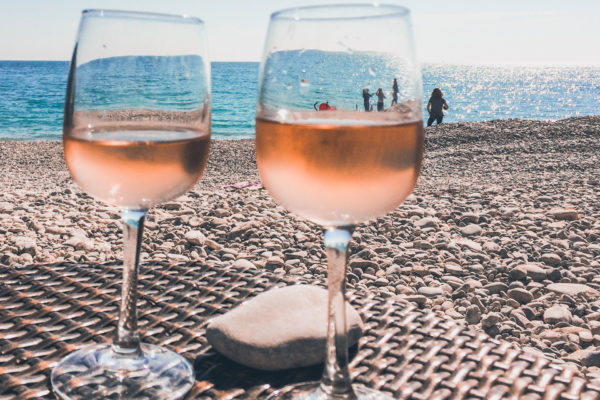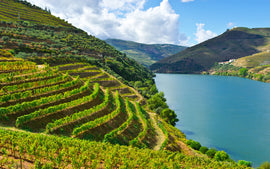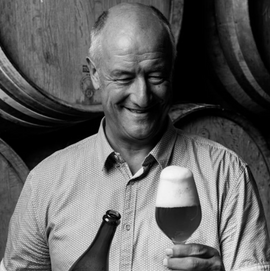Imagine the following scenario: you are surrounded by a group of the most convincingly French people you’ve ever met - each hailing from a different region of the country, wielding a bottle of their childhood rosé and remonstrating, in charmingly accented, floridly idiomatic English, on its behalf. You can choose only one to enliven your occasion; how do you decide? The very same way you get to La Place de La Revolution: praxis, praxis, praxis! Rosé club provides the background - history, methodology, ideology - for each bottle; you drink it and choose accordingly. The good news is there are no wrong answers, no losers, no Thermidor, in this particular pink tide - and for April we are featuring two of the strongest opposing forces, Provence and Rhône, mobilized for your support. The only reactionary move here is not to participate. Pensez Rose!
The Gassier family are instrumental in the history of Provence. Since the 17th century, the family distinguished themselves in the service of royalty as well as in legal and academic circles. But it is the younger branch of the family, based in Saint Estève de Var, whom provide the wine connection. From the turn of the 20th century, patriarch Raymond Gassier owned 200 hectares around the region. Raymond was briefly married to Colette Mars, a singer and actress of the time, who, in 1938, encouraged him to claim his title of nobility so that he became known as Baron Raymond Marius Gassier of Saint Estève. This proved a heritage of high lineage, associated with the kingdoms of France and Spain.
Anthony Gassier, who adored horses and rode for various prestigious French stables, eventually abandoned his equestrian career to devote himself to the family vineyard. His search for great terroir in Provence led him to Sainte-Victoire, where he fell under the spell of the Mountain and founded Château Gassier. His son Georges, representing the 5th generation in the Gassier family’s wine lineage, took over the Château property in 1997.
Olivier Souvelain joined Château Gassier in 2010 and was entrusted with the task of restructuring the vineyards and buildings as well as preserving the domaine and its environment, and the vineyards underwent organic conversion in 2016.
Owned by father and daughter team Paul and Laurence Féraud, Domaine du Pégau is one of the great estates in Châteauneuf-du-Pape. The benchmark producer of traditionally-styled Châteauneuf, Pégau is justifiably ranked among the greatest wines in the world.The Férauds have been growing vines in Châteauneuf-du-Pape since 1670, with titles to their earliest vineyards dating back to 1733. They also grew cherries and olives, but sold the bulk of their production to top négociants (Jaboulet-Aine, David & Foillard, Guigal) until 1964, when Paul decided to sell 5,000 bottles on his own label. Laurence studied business and marketing in Paris, and after various jobs in wines sales, returned to Châteauneuf-du-Pape to help manage the family estate. Laurence was full of ideas, and to differentiate themselves, proposed creating a family domaine with a unique name and label. She and Paul launched Domaine du Pégau in 1987, naming the estate after the terracotta jugs used in the Pope’s summer residence that gave the village its name.
Though the estate has scaled great heights and now includes nearly 52 acres under vine, it is a hallmark that the winegrowing remains deeply traditional and has changed very little in the past 150 years.
Think Pink,
Carrie Upson
General Manager
|
Château Gassier “Esprit Gassier” Côtes de Provence Rose 2022 |
|
|
Region/Country of Origin: Côtes de Provence, France |
About the Vineyards: Nestled in the foothills of the Montagne de Sainte-Victoire, at some of the highest elevations found in Provence, are the vineyards of Château Gassier. In 1982, the Gassier family, originally from Barcelonnette, Haute-Provence, and descendants of the Provençal nobility since 1421, bought the property and the 40 hectares of vines in the village of Puyloubier.
About the Winemaking: Mechanical harvests at dawn. Direct pressing, settling, and low fermentation temperature. Tasting Notes: Clear, pale, peach hue with a salmon pink core. The nose opens up with subtle notes of red berries which give way to more intense aromas of citrus fruits and dried mango after a few swirls in the glass. The palate is underpinned by distinctive notes of Corsican clementine and grapefruit. The finish is beautifully fresh with lingering menthol notes. |
|
Winemakers: Georges Gassier |
|
|
Price per bottle / Price per case: $24.99 / |
|
|
Suggested Food Pairing: Zucchini fries, Fig & goat cheese tarts, Garlic shrimp |
|
|
Region/Country of Origin: Vin de France with some grapes from Cotes du Rhone and Cotes du Rhone Villages |
About the Winery: Vineyards are situated in Sorgues, along the Rhône. 101+ acres of Côtes du Rhone Villages (nearly 62 acres), Côtes du Rhone (12+ acres), and Vin de Table (27+ acres) planted in deep, stony, clay soils marked by round galets that characterize the Chateauneuf-du-Pape area. About the Winemaking: From vines averaging 35 to 60 years in age. Manual harvest. Direct pressing, with no maceration. 1-month fermentation in stainless steel tanks with indigenous yeasts. No malolactic conversion. Bottled after 2 months in tank, under vacuum and with nitrogen to preserve freshness. 70% Cinsault, 20% Grenache rouge, 10% Carignan.. Tasting Notes: Pink/salmon in color, with peach, floral and red fruit aromas. Bone dry, with a crisp, mouth-watering acidity leading to a long, spicy, mineral finish. |
|
Winemaker: Laurence Féraud |
|
|
Price per bottle / Price per case: $14.99/ |
|
|
Suggested Food Pairing: Enjoyable as an aperitif, this versatile rosé will also pair well with a wide range of foods (charcuterie, Salmon Rillettes, grilled summer vegetables, hummus with crudités, and more). |
|





